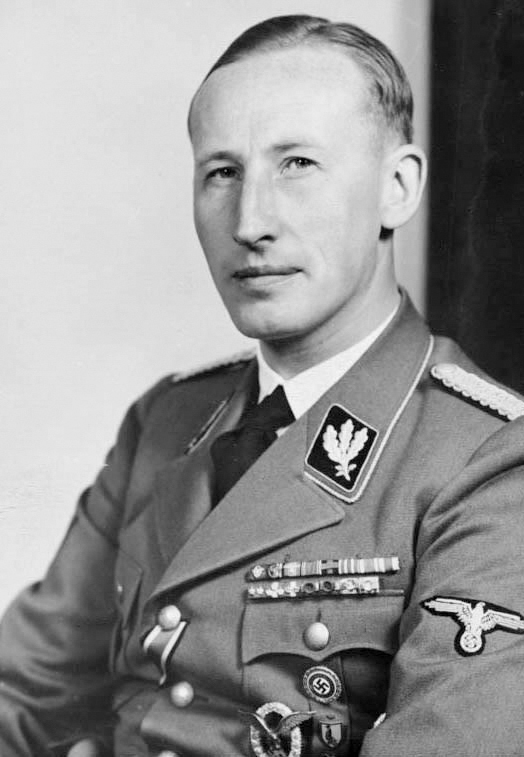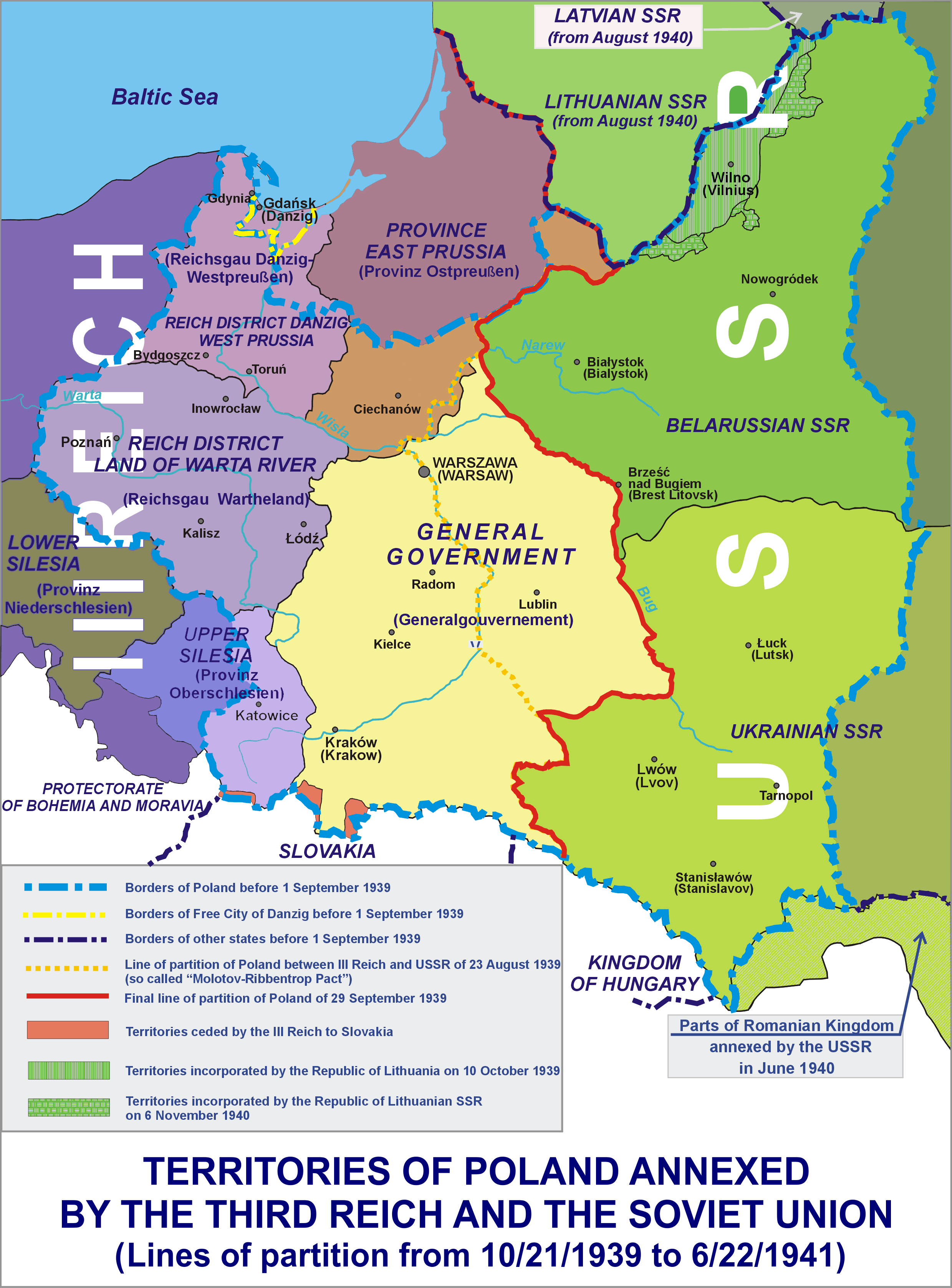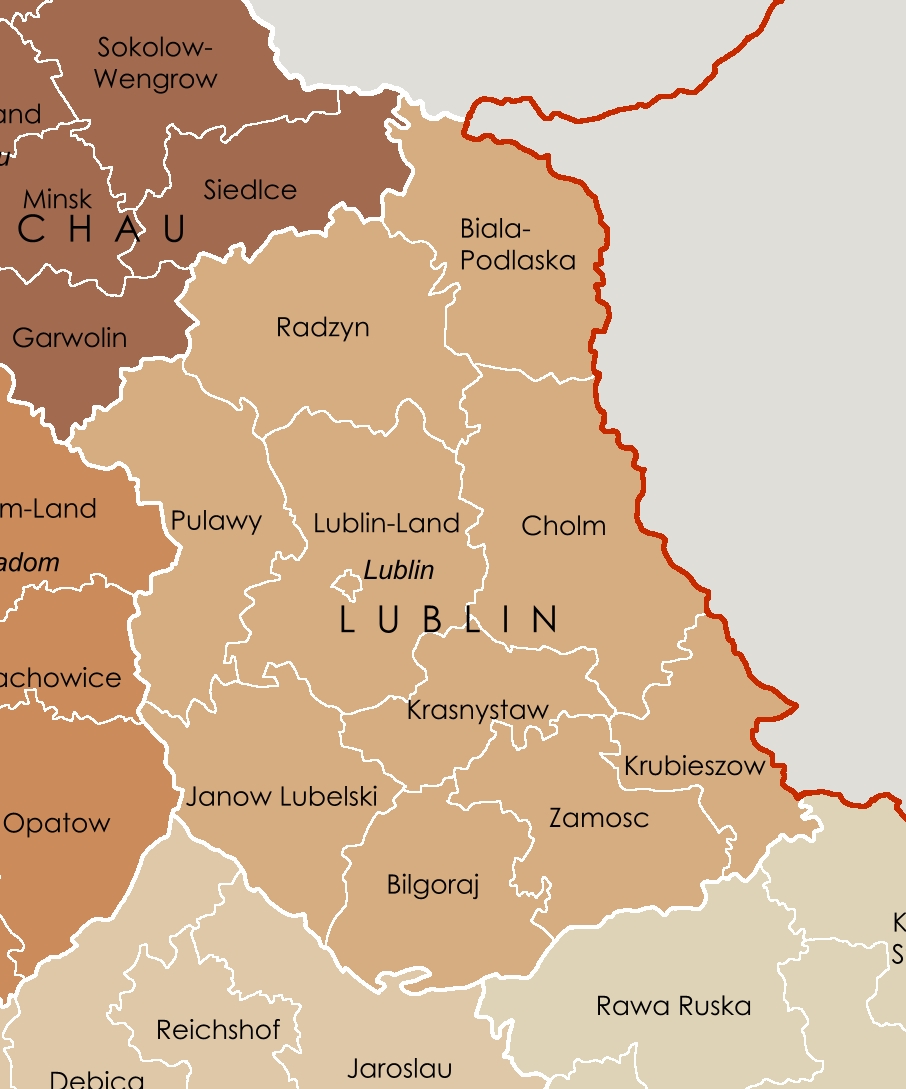|
Deportation Of Jews From Slovakia
During the Holocaust, most of Slovakia's Jewish population was deported in two waves—in 1942 and in 1944–1945. In 1942, there were two destinations: 18,746 Jews were deported in eighteen transports to Auschwitz concentration camp and another 39,000–40,000 were deported in thirty-eight transports to Majdanek and Sobibór extermination camps and various ghettos in the Lublin district of the General Governorate. A total of 57,628 people were deported; only a few hundred returned. In 1944 and 1945, 13,500 Jews were deported to Auschwitz (8,000 deportees), with smaller numbers sent to the Sachsenhausen, Ravensbrück, Bergen-Belsen, and Theresienstadt concentration camps. Altogether, these deportations resulted in the deaths of around 67,000 of the 89,000 Jews living in Slovakia. Background In the political crisis that followed the September 1938 Munich Agreement, the conservative, ethnonationalist Slovak People’s Party unilaterally declared a state of autonomy for ... [...More Info...] [...Related Items...] OR: [Wikipedia] [Google] [Baidu] |
1938 Deportation Of Jews From Slovakia
From 4 to 7 November 1938, thousands of Jews were deported from Slovakia to the no-man's land on the Slovak−Hungarian border. Following Hungarian territorial gains in the First Vienna Award on 2 November, Slovak Jews were accused of favoring Hungary in the dispute. With the help of Adolf Eichmann, Slovak People's Party leaders planned the deportation, which was carried out by local police and the Hlinka Guard. Conflicting orders were issued to target either Jews who were poor or those who lacked Slovak citizenship, resulting in chaos. Many of the deportees managed to return home within a few days, but more than 800 were left in tent camps near Miloslavov, Veľký Kýr, and Šamorín in the no man's land along the border for months with some groups staying until January or February 1939. Another several hundred Jews were deported from Hungary to the no man's land. In the meantime they endured winter weather with little or no shelter, although they were helped by Jewish organizati ... [...More Info...] [...Related Items...] OR: [Wikipedia] [Google] [Baidu] |
Ethnonationalist
Ethnic nationalism, also known as ethnonationalism, is a form of nationalism wherein the nation and nationality are defined in terms of ethnicity, with emphasis on an ethnocentric (and in some cases an ethnocratic) approach to various political issues related to national affirmation of a particular ethnic group. The central tenet of ethnic nationalists is that "nations are defined by a shared heritage, which usually includes a common language, a common faith, and a common ethnic ancestry". Those of other ethnicities may be classified as second-class citizens. The Ottoman Empire and United States are examples of polyethnic states in which the nation is defined by its geographical territory. The theorist Anthony D. Smith uses the term "ethnic nationalism" in that sense. Diaspora-studies scholars broaden the concept of "nation" to diasporic communities. The terms ethnonation and ethnonationalism are sometimes used to describe a conceptual collective of dispersed ethnics. De ... [...More Info...] [...Related Items...] OR: [Wikipedia] [Google] [Baidu] |
Dieter Wisliceny
Dieter Wisliceny (13 January 1911 – 4 May 1948) was a member of the ''Schutzstaffel'' (SS) and one of the deputies of Adolf Eichmann, helping to organise and coordinate the wide scale deportations of the Jews across Europe during the Holocaust. Crimes against humanity Joining the Nazi Party in 1933 and enlisting in the SS in 1934, Wisliceny eventually rose to the rank of SS-''Hauptsturmführer'' (captain) in 1940; he worked in the Reich Security Head Office Referat IV B4 under Adolf Eichmann.. During implementation of the Final Solution, his task was the ghettoization and liquidation of several important Jewish communities in Nazi-occupied Europe, including those of Greece, Hungary and Slovakia. Wisliceny also re-introduced the yellow star in occupied countries; the yellow star being used to distinguish Jews from non-Jews. He was involved in the deportation of the Hungarian Jews in 1944. Wisliceny was an important witness at the Nuremberg trials. His testimony would later prov ... [...More Info...] [...Related Items...] OR: [Wikipedia] [Google] [Baidu] |
Judenberater
The or (German plural: ; ), variously translated as Jewish advisers or Jewish experts, were Nazi SS officials who supervised anti-Jewish legislation and the deportations of Jews in the countries under their responsibility. Key architects of the Holocaust, most of them were under the direct command of Adolf Eichmann.Herbert F. Ziegler, A review to the book by ''Theodor Dannecker: Ein Funktionär der 'Endlösung' '', ''Central European History'', Vol. 32, No. 4, 1999. Role The ''Judenreferent'' was not an "adviser" in the literal sense of the term, as he was deployed exclusively in allied or defeated states to ''promote'' anti-Jewish measures and their deportations, and was a ''direct participant'' in anti-Jewish activities before and during World War II. In France and several other countries defeated by Germany, the Jewish advisers were subject to the disciplinary command of the ''Sicherheitspolizei''. In allied countries such as Bulgaria and Romania, they were subordinate to ... [...More Info...] [...Related Items...] OR: [Wikipedia] [Google] [Baidu] |
Linda Reich Auschwitz Album
Linda may refer to: As a name * Linda (given name), a female given name (including a list of people and fictional characters so named) * Linda (singer) (born 1977), stage name of Svetlana Geiman, a Russian singer * Anita Linda (born Alice Lake in 1924), Filipino film actress * Bogusław Linda (born 1952), Polish actor * Solomon Linda (1909–1962), South African Zulu musician, singer and composer who wrote the song "Mbube" which later became "The Lion Sleeps Tonight" Places * Linda, California, a census-designated place * Linda, Missouri, a ghost town * Linda, Tasmania, Australia, a ghost town * Linda, Georgia, village in Abkhazia, Georgia * Linda, Bashkortostan, village in Bashkortostan, Russia * Linda Valley, Tasmania * 7169 Linda, an asteroid * Linda, a small lunar crater - see Delisle (crater) Music * ''Linda'' (Linda George album), 1974 * ''Linda'' (Linda Clifford album), 1977 * ''Linda'' (Miguel Bosé album), 1978 ** "Linda" (Miguel Bosé song), the title song * "Li ... [...More Info...] [...Related Items...] OR: [Wikipedia] [Google] [Baidu] |
Treblinka Extermination Camp
Treblinka () was an extermination camp, built and operated by Nazi Germany in occupied Poland during World War II. It was in a forest north-east of Warsaw, south of the village of Treblinka in what is now the Masovian Voivodeship. The camp operated between 23 July 1942 and 19 October 1943 as part of Operation Reinhard, the deadliest phase of the Final Solution. During this time, it is estimated that between 700,000 and 900,000 Jews were murdered in its gas chambers, along with 2,000 Romani people. More Jews were murdered at Treblinka than at any other Nazi extermination camp apart from Auschwitz-Birkenau. Managed by the German SS with assistance from Trawniki guards – recruited from among Soviet POWs to serve with the Germans – the camp consisted of two separate units. Treblinka I was a forced-labour camp (''Arbeitslager'') whose prisoners worked in the gravel pit or irrigation area and in the forest, where they cut wood to fuel the cremation pits. Between 1941 and 1 ... [...More Info...] [...Related Items...] OR: [Wikipedia] [Google] [Baidu] |
Bełżec Extermination Camp
Belzec (English: or , Polish: ) was a Nazi German extermination camp built by the SS for the purpose of implementing the secretive Operation Reinhard, the plan to murder all Polish Jews, a major part of the "Final Solution" which in total entailed the murder of about 6 million Jews in the Holocaust. The camp operated from to the end of . It was situated about south of the local railroad station of Bełżec, in the new Lublin District of the General Government territory of German-occupied Poland. The burning of exhumed corpses on five open-air grids and bone crushing continued until March 1943. Between 430,000 and 500,000 Jews are believed to have been murdered by the SS at Bełżec. It was the third-deadliest extermination camp, exceeded only by Treblinka and Auschwitz. Only seven Jews performing slave labour with the camp's '' Sonderkommando'' survived World War II; and only Rudolf Reder became known, thanks to his official postwar testimony. The lack of viable w ... [...More Info...] [...Related Items...] OR: [Wikipedia] [Google] [Baidu] |
Operation Reinhard
or ''Einsatz Reinhard'' , location = Occupied Poland , date = October 1941 – November 1943 , incident_type = Mass deportations to extermination camps , perpetrators = Odilo Globočnik, Hermann Höfle, Richard Thomalla, Erwin Lambert, Christian Wirth, Heinrich Himmler, Franz Stangl and others. , participants = , organizations = SS, Order Police battalions, ''Sicherheitsdienst'', Trawnikis , camp = BelzecSobiborTreblinka Additional: ChełmnoMajdanek Auschwitz II , ghetto = European and Jewish ghettos in German-occupied Poland including Białystok, Częstochowa, Kraków, Lublin, Łódź, Warsaw and others , victims = Around 2 million Jews , survivors = , witnesses = , documentation = , memorials = On camp sites and deportation points , notes = This was the most lethal phase of the Holocaust. Operation Reinhard or Operation Reinhardt (german: Aktion Reinhard or ; also or ) was the codename of the secret Ger ... [...More Info...] [...Related Items...] OR: [Wikipedia] [Google] [Baidu] |
Schutzstaffel
The ''Schutzstaffel'' (SS; also stylized as ''ᛋᛋ'' with Armanen runes; ; "Protection Squadron") was a major paramilitary organization under Adolf Hitler and the Nazi Party in Nazi Germany, and later throughout German-occupied Europe during World War II. It began with a small guard unit known as the ''Saal-Schutz'' ("Hall Security") made up of party volunteers to provide security for party meetings in Munich. In 1925, Heinrich Himmler joined the unit, which had by then been reformed and given its final name. Under his direction (1929–1945) it grew from a small paramilitary formation during the Weimar Republic to one of the most powerful organizations in Nazi Germany. From the time of the Nazi Party's rise to power until the regime's collapse in 1945, the SS was the foremost agency of security, surveillance, and terror within Germany and German-occupied Europe. The two main constituent groups were the '' Allgemeine SS'' (General SS) and ''Waffen-SS'' (Armed SS). The ' ... [...More Info...] [...Related Items...] OR: [Wikipedia] [Google] [Baidu] |
German-occupied Poland
German-occupied Poland during World War II consisted of two major parts with different types of administration. The Polish areas annexed by Nazi Germany following the invasion of Poland at the beginning of World War II—nearly a quarter of the entire territory of the Second Polish Republic—were placed directly under the German civil administration. The official term used by the Nazi authorities for these areas was the "incorporated Eastern territories" (german: Eingegliederte Ostgebiete). They planned for a complete Germanization of the annexed territories, considering them part of ''lebensraum''. The rest of Nazi-occupied Poland was renamed as the General Government district ().Polish Ministry of Foreign Affairs, "German Occupation of Poland" (Washington, D.C.: Dale Street Books, 2014), pp. 12-16. See also *Occupation of Poland (1939–1945) The occupation of Poland by Nazi Germany and the Soviet Union during World War II (1939–1945) began with the German-Soviet in ... [...More Info...] [...Related Items...] OR: [Wikipedia] [Google] [Baidu] |
Lublin District
Lublin District (german: Distrikt Lublin) was one of the first four Nazi districts of the General Governorate region of German-occupied Poland during World War II, along with Warsaw District, Radom District, and Kraków District. On the south and east, it initially bordered the Soviet Union. After Operation Barbarossa, it bordered Reichskommissariat Ukraine During World War II, (abbreviated as RKU) was the civilian occupation regime () of much of Nazi German-occupied Ukraine (which included adjacent areas of modern-day Belarus and pre-war Second Polish Republic). It was governed by the Reich Min ... to the east and Galizien District to the south, which was also part of the General Governorate. References * General Government History of Lublin Voivodeship {{Poland-history-stub ... [...More Info...] [...Related Items...] OR: [Wikipedia] [Google] [Baidu] |
Final Solution
The Final Solution (german: die Endlösung, ) or the Final Solution to the Jewish Question (german: Endlösung der Judenfrage, ) was a Nazi plan for the genocide of individuals they defined as Jews during World War II. The "Final Solution to the Jewish question" was the official code name for the murder of all Jews within reach, which was not restricted to the European continent. This policy of deliberate and systematic genocide starting across German-occupied Europe was formulated in procedural and geopolitical terms by Nazi leadership in January 1942 at the Wannsee Conference held near Berlin, and culminated in the Holocaust, which saw the murder of 90% of Polish Jews, and two-thirds of the Jewish population of Europe. The nature and timing of the decisions that led to the Final Solution is an intensely researched and debated aspect of the Holocaust. The program evolved during the first 25 months of war leading to the attempt at "murdering every last Jew in the German gra ... [...More Info...] [...Related Items...] OR: [Wikipedia] [Google] [Baidu] |








